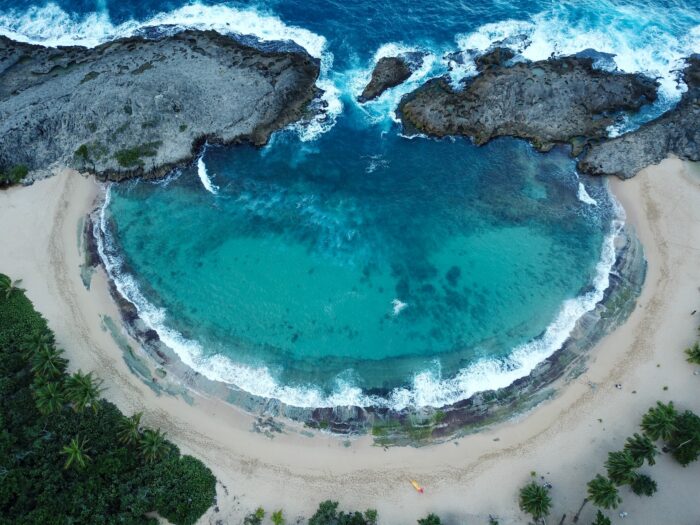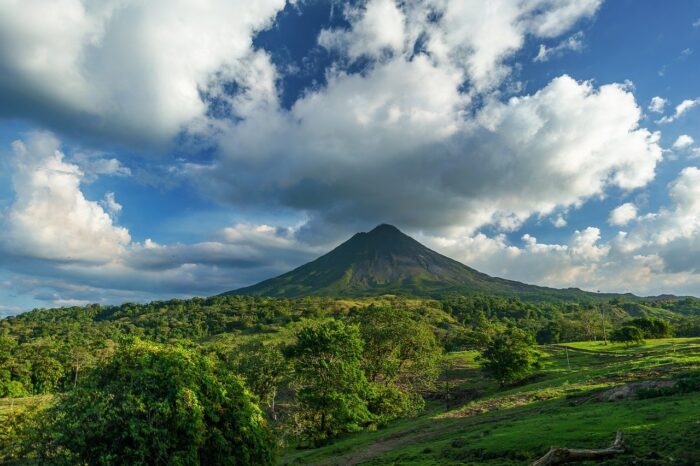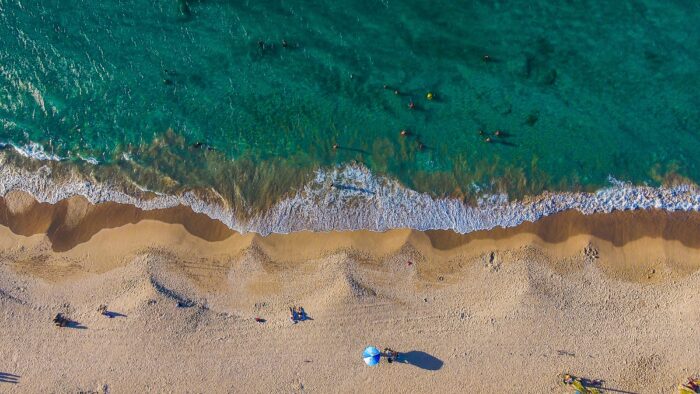The Top Tax-Free Countries to Move to in 2022
One of the downsides for U.S. citizens living abroad is figuring out your tax implications in the U.S. and oversees. Imagine not having to pay those taxes abroad, what would that be like? Well for those who want to live in a “tax-free” country, we’ve got good news, there are a number of countries with low or no income tax and no capital gains. Note that actually moving to one of these jurisdiction requires a bit of research, paperwork, meeting requirements, and patience…but it might just be worth it!

Let’s get one thing straight, you can’t avoid taxes all together. As a U.S. citizens, it’s important to note that U.S. tax code requires citizens to file taxes on income earned anywhere in the world, even if you live abroad. Although we don’t recommend it, one way to avoid paying Uncle Sam is to renounce your U.S. citizenship. This process has gotten progressively harder over the years – especially for those that primarily care about tax avoidance. However, the good news is that you don’t have to renounce your citizenship to take advantage of tax breaks abroad.
What does living in a tax-free country mean?
When it comes to living in a tax-free country we will go over some of the important factors to consider in the next section but before that, let’s take a look at what tax-free means in practical terms. Here is an overview of some of the types of tax-free options out there:
- No Tax on Worldwide Income. In these countries, citizens or residents do not pay any local taxes on income earned anywhere in the world.
- Territorial Tax (No Tax on Out of Country Income but Taxes to be Paid on In-Country Income). In some jurisdictions, taxes must be paid on income earned within that country but if the resident earns income or capital gains from another country (for example the U.S.), no taxes need to be paid on those monies.
- Limited Taxes on Income or Gains Brought into the Country. In these countries, only monies brought into the country (for example funds to cover living expenses) are subject to tax.
- Lower Tax Jurisdictions. In some cases, a flat income tax may be charged on multiple incomes lumped together at much lower rates than the U.S.
For all of these reasons, plus others mentioned in the next section, it’s imperative to research and give some serious thought to which tax-free country makes the most sense for you.
The Top Tax-Free Countries to Move to in 2022
There are many tax-free options around the world but you’ll often see that they are geared towards the wealthy and not viable for the average person. Here are some things to keep in mind when researching the best country for you:
- Often a tax-free country has a high standard of living, but what is also high is the investment requirements for foreigners to gain residency (temporary or permanent) and/or citizenship. For example, Monaco is a prime destination, but they require €500,000 deposited in a local bank by the main applicant.
- Often times, the cost of living in low tax jurisdictions can be very high. Especially on islands where many goods must be imported. Sales tax and property tax rates and other surcharges can easily make life less affordable for the average person. For example, take the tax-free island of Borneo. It is a remote island with very high cost of living, especially for a foreigner.
- Besides costs, banking and employment opportunities can be prime considerations. You’ll need to find out if residency abroad includes a work permit, if not, you’ll have to figure out how you’ll make a living. If you’ll be working remotely, then the quality of the internet infrastructure is important. Some countries offer a fast-track visa for “digital nomads” so be sure to check out our ultimate list of the best countries to work remotely.

While the financial requirements for some tax-free countries might be unrealistic, don’t fret because are tons of options that are a great fit for the average Jane! Below, we go over 16 countries from Europe, Latin America, the Caribbean, and the Asia Pacific regions that are generally considered good options. Additionally, we also discuss the U.S. territory of Puerto Rico.
We’ve only included places that are geared towards a financially-average, skilled but not wealthy, U.S. citizen who is looking to move to a tax-free country. One that they feel comfortable in, without having to jump through endless hoops, and make large investments, in order to do so.
As always, it’s important to check with the relevant Embassy or Consulate to get the latest information on visa and residency requirements. Each country has its own set of regulations, which can change from time to time. For instance Malaysia was a great tax-haven for foreigners with it’s MM2H (Malaysia My Second Home) program. But in 2021 they revised the financial requirements of this program making it out of reach for the average person (monthly income requirements went from $2,500 to $9,500?!).
1. Georgia
Georgia is one of the most visitor-friendly economies in Europe. For starters, it is a territorial tax-country, which means visitors who do not earn income in Georgia do not face any local tax obligations. U.S. citizens and their families can easily obtain a 360-day visa, based on some reasonable financial proof thresholds (monthly income of at least $2,000 USD) and some other not so difficult to meet requirements.
For those wanting to work remotely from Georgia, you can with their digital nomad visa! And, for those who would be earning income within the country, its reassuring to know that tax rates in Georgia are often being slashed. Currently, taxes for in-country income will range from 5 to 15 percent.
2. Portugal
Portugal has a Non-Habitual Resident (NHR) program that exempts earnings derived from activities outside Portugal, such as: regular income, profits, dividends, royalties, real estate investments and capital gains. Pension income is taxed at a low rate of 10%.
The requirements list is not unreasonable – for example, proof of sufficient funds (roughly $8,500 a year), proof of health insurance, proof of accommodation, to name a few. Learn more about living in Portugal in our ultimate guide.
3. Czech Republic
The Czech Republic does not have a zero-tax jurisdiction. However, it does offer a low, flat income tax rate of 15%, levied on all income from worldwide sources. Non-residents only pay tax on income sourced within the Czech Republic.

The Czech Republic allows residency to legitimate visitors for up to one year. The application process can take up to 4 months and requires proof of income, accommodation a trade license, and an immigration interview, among other things.
4. Estonia
Like the Czech Republic, Estonia is not a tax-free country per se, but Estonian residents pay a flat 20% taxes on worldwide income. Certain pension payments are taxed at 10%. It is also known as a low tax jurisdiction for non-resident businesses.
With their digital nomad visa you can stay in the country for up to a year and by spending 183 consecutive days or more in-country you will be considered a tax resident. However, a work around is to “reset the clock” by leaving Estonia for a bit.
Health insurance, a background check, and proof of sufficient funds are just some of the requirements to stay and work remotely.
5. Croatia
Holding up its reputation for being one of the top tourist destinations in Europe, Croatia also unveiled it’s digital nomad visa recently. Remote workers and their families can stay in-country for up to year with the possibility to renew for 6 months.
Proof of modest income is required (around $2,700 a month). Regarding taxes, digital nomads are exempt from paying income tax!
If you plan to make Croatia your permanent home (which is quite difficult) keep in mind that Croatian tax-residency can lead to high income tax rates, between 20 and 30 percent on the average. The rates for dividend, interest and capital gains taxes are low at 10%.
If you’re interested in moving to Europe check out our guide on the 17 easiest countries to move to (including the countries mentioned above). You’ll find over 50 viable visa options—and their requirements—including digital nomad visas, work visas, non-lucrative visas, student visas, investment visas and more! Grab your copy of I’m Outta Here! An American’s Ultimate Visa Guide to Living in Europe today and make your European dream a reality!

6. The Bahamas
The Bahamas, which makes most of its money from promoting tourism, allows visitors to apply for temporary residency. Bahaman residents do not pay any taxes on income they earn anywhere in the world!
For a modest fee of $1,000 a year, your temporary residency visa can be renewed for up to 20 years, after which you can apply for a permanent residency. The process to become a permanent resident can accelerated, but it requires substantial investments.
Additionally, the Bahamas has a digital nomad visa, allowing remote workers to reside on any of it’s 16 islands for up to a year under tax-free.
7. Turks and Caicos
Residents in the British Overseas Territory of Turks and Caicos not only avoid paying income taxes, they also do not pay property tax, corporate tax, capital gains tax or inheritance tax.
The only downside is that unlike the Bahamas, where temporary residence is cheaply obtained and can be renewed for two decades, the Turks and Caicos prefers to fast track economic residency applications for a relatively high investment – investing more than $300,000 in rehabilitating a distressed property or building a new residence. A commercial investment of $750,000 in a local venture will also do the trick.
8. Panama
Panama is a prime destination for U.S. retirees. It has three advantages – territorial taxation, easy to obtain residency and one of Latin America’s most robust banking systems.
Panama imposes no income, capital gains, corporate or estate taxes on offshore entities or investors if their income and properties are outside the territory.
For retirees you’ll need to show a pension of $1,000 a month to qualify. Alternatively, if you haven’t retired yet you may be able to qualify for the Panama Friendly Nation’s Visa which requires a property investment of at least $200,000, a bank deposit of at least the same amount, or a work contract with a company in Panama.
9. Costa Rica
Costa Rica employs a territorial tax system, which means that unless you earn income in the country, you won’t have any tax obligations.

Additionally, it is relatively easy to gain a residency permit for the country. Costa Rica allows temporary residency for up to two years under the their equivalent of a non-lucrative visa. A modest monthly income proof of $2,500 (or a deposit of $60,000 in a Costa Rican bank) is the main requirement. The visa can be renewed as well. If you’re retired, there is an option to qualify for the their pensioner visa which requires a fixed income of $1, 000 a month.
The combination of their tax system and visa options makes Costa Rica a favorite for U.S. retirees and those seeking a second home, despite some of the local issues such as bureaucracy and the lack of a top notch banking system.
10. Nicaragua
Nicaragua often competes with its southern neighbor, Costa Rica, to attract residents. It is extremely easy to gain residence. Like Costa Rica, Nicaragua offers both a non-lucrative and retirement type of visa. Proof of $600-$750 in monthly income will get you started, though you must live there for six months a year to avoid revocation of your tax benefits.
The tax system is territorial, which means that non-Nicaraguan sourced income is tax-free. Residents from overseas pay a progressive flat rate tax (going up to 25%) on Nicaraguan generated income, while non-residents pay a flat rate of 15%.
11. Guatemala
Guatemala is a territorial tax country, so taxes only apply if the income or gains are realized in country. For any income derived in Guatemala the country lumps most categories of income under one umbrella and charges a low flat rate of 7%. Dividends (at 5%) and capital gains (at 10%) are charged at different rates.
While a $100,000 investment will get you temporary residence, the best option for U.S. persons would be to apply for permanent residence by showing $1,250 in monthly income. There are residency requirements in terms of time spent there, otherwise the status may be revoked.
Temporary residents who live full time in Guatemala can obtain permanent residency after 5 years.
12. Uruguay
Besides the sophisticated and highly educated population, and beautiful locations, Uruguay is a territorial tax country with no taxes levied on worldwide income earned by residents.

It is an easy country to buy, sell and rent property. In terms of residency, it is often recommended that one enter Uruguay as a tourist and then apply for residency at the national immigration office. The requirements are pretty reasonable but it may take 12 to 18 months for everything to be approved, at which point one can stay indefinitely. Permanent residency applications are granted to those who have resided there for over 2 years.
13. Paraguay
Paraguay not only has a territorial tax program, which means that foreign source income is not taxed; locally sourced income is extremely modest at 10%. This, along with an easy to obtain residency program, makes it an attractive destination.
Obtaining Paraguayan residency require a $5,200 bank deposit or if you are a retiree you’ll only need to show $1,300 in retirement income per month. The road to citizenship, is pretty quick and readily available for a permanent resident who has been there for over three years.
14. Thailand
Thailand also has a territorial taxation system, so income or capital gains from outside the country are not taxed, nor do certain other taxes apply. Also, there is no wealth tax.
For the most part, anyone living in Thailand for more than 180 days a year is considered a resident for tax purposes, though those who have been in the country for less than 180 days may qualify, depending on the visa and/or residency permit. The two most popular residency visas are the 1) retirement visa which requires proof of $25,o00 USD or a monthly income source of about $2,000 USD and 2) the Thai Elite Residency program, which is requires a larger financial investment of $20,000-$60,000 to obtain a residency permit which allows individuals and families to live in the country for up to 20 years.
15. The Philippines
The Philippines has a territorial tax system, so worldwide income is not taxed if it is earned outside the Philippines. Similarly, there are no capital gains taxes if the property is located outside the country (though there is a 6% tax on Philippine held properties). There are also no wealth taxes.
There are a couple different ways to get residency, one is through the Special Resident Retiree’s Visa (SRRV) and the other is via the Special Investor’s Resident Visa (SIRV). The SRRV requires proof of pension payments from the U.S., plus a bank deposit. Amounts vary based on age and pension, or lack there of. For example:
- People aged 35-49 can gain an SRRV by showing a monthly pension (minimum $800 for individuals or $1,000 for married couples per month), along with a deposit of $10,000 in a Filipino bank. The deposit can be invested locally after a month. Without a pension, the deposit requirement rises to $50,000 for this age group.
- People over 50 have to deposit only $20,000.
The deposit cover a spouse and one child.
The SIRV route requires an investment of $75,000 in specified local investments.
16. Puerto Rico
The last entry on this list is Puerto Rico, which is a U.S. territory but offers tax advantages for U.S. citizens. It is considered to be a tax haven for a number of reasons, tied to the Individual Investors Act. Under this Act, Puerto Rico residents don’t pay federal or island income taxes on dividend and interest income, or on capital gains. Plus, any income earned in Puerto Rico are exempt from U.S. federal taxes. While you pay on the island, those rates are substantially lower.

In order to qualify as a resident, you must live on the island for 183 days a year. One thing to consider is the 11.5% sales tax, which is more than double that of the average U.S. rate of 5.09%.
The Benefits of Living in These Tax Havens
While there are plenty more tax havens around the world, we have chosen countries with no-tax, low-tax and/or territorial tax systems, where gaining residency does not require jumping through major hoops or investing half-million dollars.
The main benefit for moving to a tax haven is that as a U.S. citizen you can avoid double taxation. Having either a zero or very low tax rates on active or passive income can make quite the difference. We hope you found our list helpful and as a reminder be sure do your research to understand the latest requirements.




